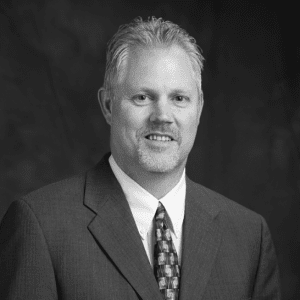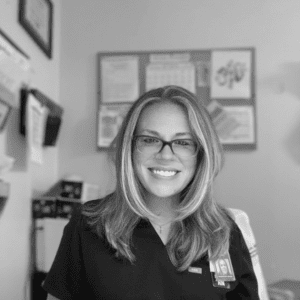How Nurses Can Prepare for the Holidays, Hospital Overflow, and Staff Shortages

As healthcare workers know, fall typically marks the start of the “busy season” at hospitals. Drops in temperature are associated with higher rates of mortality for various diseases and increased rates of accidents due to weather. But other factors may make this coming busy season a particularly hectic one.
Epidemiologists have a lot on their minds this year. With a particularly bad flu circulating, monkeypox being declared a public health emergency over the summer, and with COVID-19 still as unpredictable as ever, there are concerns about how well hospitals will fare.
While it’s impossible to predict the future, consider how healthcare supply chain experts, virologists, and frontline workers are weighing in for the 2022-2023 winter season.
The Forecast for COVID-19
As of late summer 2022, rates of new COVID-19 cases are stagnant or on the decline in nearly every state in the U.S. And rates of hospitalizations and deaths are decreasing, too. Compared to this time last year, mortality rates are far lower than they were at the height of the Delta variant.
In September, President Biden even said “the pandemic is over.” But many healthcare professionals and scientists were taken aback by the statement.
“I think in hindsight, he probably would say that it’s not completely over yet,” says Rodney Rohde, a virologist, epidemiologist, and professor in the college health professions at Texas State University. “There’s still 400-500 people dying per day. In certain areas, there are still lots of new cases. We’re still watching.”
Biden’s secretary of health and human services later walked back the President’s statement – clarifying that while the situation has improved, COVID-19 is still considered a public health emergency.
But experts worry that the damage may already be done. As Jason Farley, nurse scientist and professor within Johns Hopkins University School of Nursing explains, there’s a fine line between cautious optimism and letting our guards down prematurely.
If the public stops taking harm-reduction precautions, such as taking at-home tests when needed, staying at home when sick, and periodically getting boosted, there could be serious consequences.
Rohde says that even though the worst of COVID-19 is likely behind us, it’s still too early to rule out the possibility of any surprises. The primary Omicron variant in circulation now is less severe than variants of 2020 and 2021, but experts can’t say if this trend will continue.
“We definitely need to be prepared in case it does surge again,” he says. “We just don’t know enough about that virus yet. It’s still rapidly mutating.”
The Flu Factor
Outside of COVID-19, healthcare workers are worried about other reasons that could cause hospital admission rates to go up. The flu is a major factor, for instance.
Each year, scientists observe the flu season in the southern hemisphere to predict what will happen in the northern half of the world. This year, Australia’s flu season was particularly bad. It began about two months earlier than normal and rates peaked about three times higher than average.
“That early start is usually a metric that tells us about the immunity of the population … that it’s not as strong as it has been in the past several years,” Rohde says. “That’s a bit alarming.”
The public tends to underestimate the seriousness of the flu since many recover without seeking care. Typically, less than half of the population gets their flu vaccine each year.
But the impact of the flu can be severe for hospitals and healthcare workers. The 2017-2018 flu season, which was the worst flu season in terms of deaths in decades, caused many hospitals to reach or exceed capacity. Some even set up triage tents to deal with overflow.
The last few flu seasons haven’t been nearly as bad. Rohde says social distancing and other pandemic-era practices likely helped slow its spread. But if people stop being as vigilant about their social and hygienic practices, which they already are, this could give the flu an opportunity to thrive.
“This year, a lot of people are saying they are ‘done’ with COVID, masking, and avoiding crowds,” says Catherine Skowronsky, a clinical nurse specialist in Cleveland, Ohio. “Between the flu and COVID, we could have a perfect storm of respiratory infections. I think that would be the worst case scenario.”
Scientists have been worried about the possibility of a “twindemic” for three years now. If COVID and the flu surge at the same time, hospitals could overflow again.
“We don’t know if it’s going to be massively dangerous … that’s hard to predict,” Rohde says. “Maybe we will catch a break. There’s always that chance, but if nothing else, I think we need to prepare for the worst and hope for the best.”
So, how well prepared is the U.S. healthcare system for a twindemic?
Challenges Outside and Inside Hospitals
Experts say that this year’s busy season will likely depend on two main factors: the population’s vaccination rates and hospital preparations.
Vaccination Rates
In September, the Centers for Disease Control and Prevention (CDC) endorsed new boosters from Pfizer and Moderna. And flu vaccine manufacturers began distributions during the same month.
According to CDC director Rochelle Walensky, the new boosters could prevent as many as 100,000 COVID-related hospitalizations and 9,000 deaths. But health officials’ efforts to encourage people to get vaccinated don’t seem to be as effective as they hoped.
While it’s early to analyze flu vaccination rates for this year, initial data shows it’s been off to a slower than average start. And the same is true for the newly approved COVID boosters.
A recent national survey released by the University of Cincinnati found that only a third of eligible people have gotten any booster shot since getting their initial vaccine.
Three years into the pandemic, people are understandably fatigued by COVID-era etiquette like social distancing and quarantining. But without these practices – and without adequate vaccination levels – there is a higher likelihood for the virus to spread and mutate.
“People with high-risk conditions who have had a long time since prior boost are a greater proportion of those hospitalized,” Farley says. “Those never vaccinated, of course, are the primary driving force, but we also see a lot of folks who’ve had a long interval between their prior boost and the new infection.”
As far as how long you should wait to get an additional booster since your last, Farley says there is no precise time line established. But “the farther you are from your prior booster, the greater the risk,” he says. “In general, a booster older than six or more months in a very high-risk patient is a cause for concern.”
There’s still time for the public to catch up with their vaccines before the height of hospitals’ “busy season.” Right now, it’s up to suppliers to keep distributing vaccines smoothly and public health officials to keep reminding the public that the fight to flatten the curve isn’t over.
Hospital Operations
Vaccination rates will play into how widespread COVID-19 and the flu will be this winter. But healthcare workers burnout rates will also depend on how ready hospitals are for another busy season. The good news is that, in certain ways, hospitals are more prepared this time around than they were in 2020.
Tinglong Dai, a professor at the Johns Hopkins business school who specializes in healthcare operations, says there have been improvements to supply chain transparency, which was largely responsible for the scarcity of personal protective equipment (PPE) during the first wave of COVID.
“A lot of hospitals now work with firms that offer supply chain mapping solutions,” he says. “The White House has also launched several related initiatives aimed at improving supply chain transparency.”
Faith Lynch says improvements are noticeable at NYU Home Hospital, where she is a hemodialysis nurse and manager in the acute and home dialysis services center.
“I think 2020 and supply chain issues have opened up these organizations’ eyes in terms of keeping more supplies on par due to shortages,” she says. “I know our hospital now maintains a backup supply product list due to so many shortages in the last two years.”
But as healthcare workers know, how a hospital functions during crises is not just a supply chain issue. Capacity and staffing issues for nurses remain a major problem. During COVID’s peaks, hospitals across the U.S. exceeded capacity, resulting in countless preventable deaths and devastating rates of burnout among healthcare workers.
When hospitals go into crisis mode, healthcare workers are forced to ration their time and resources based on the likelihood of a patient’s survival. This means making hard choices about who to help in favor of the greater good.
For instance, last September in Alaska, hospitals across the state began operating in crisis mode due to an influx of COVID-related hospitalizations. At one facility, four patients needed renal replacement therapy, a type of dialysis. But the center was only able to offer it to two of them, resulting in the death of one of the two patients who had to wait their turn. Hundreds of similar instances happened around the country.
When healthcare teams have to make these heart-wrenching decisions, it’s hard to bounce back. Nurses need downtime to recover from the trauma and stress caused by crisis situations, but they usually aren’t given the opportunity.
“That causes another moral injury for nurses,” Farley says. “They’re fatigued and they’re burnt out. And when they’re not providing the best level of care, that results in what we call moral injury, which does contribute back to more burnout.”
But even when hospitals are below capacity and operating normally, many are chronically understaffed and have been long before the pandemic. This is also fueling burnout. As a result, many nurses have decided to seek other types of employment. A survey from 2021 by staffing firm Incredible Health found that a third of nurses plan to leave the profession by the end of 2022 due to high-stress working environments.
The fear now is that an exodus of nurses in coming months will shrink hospital capacities even more and further increase the pressure on the remaining bedside nurses. Since many hospitals are already operating with skeleton crews, another influx of hospitalizations could push them to the limit.
“It’s a vicious cycle that nurses and all healthcare workers right now are facing,” Farley says.
According to Dai, hospitals should be held responsible for stopping the cycle. “For years, hospital executives have focused on billing, finance, marketing, and legal issues. The first mission of a hospital is to provide patient care, which is provided by physicians, nurses, and other clinical staff,” Dai says.
This profit-focused model of healthcare that Dai speaks of has only fueled retention problems. And while many hospitals are tempted to cut staffing costs to make up for financial blows caused by the pandemic, doing so will put them in a delicate situation in the case of a twindemic – the consequences of which will fall on the shoulders of frontline healthcare workers.
“Throughout the pandemic, many hospitals treated their clinical staff as if they were disposable. That must be rectified,” Dai says. “There are many other critical issues, but I believe that respect for people needs to be at the forefront.”
Advice for Nurses Entering the Holiday Season
While there are certainly factors that are out of healthcare workers’ control this year, there are actions that they can take to care for themselves and their communities.
“Doing your best to make informed judgments of your engagements with large indoor crowds is always an important consideration. It never hurts,” Farley says. “But get your bivalent Omicron booster for COVID-19 and your influenza vaccination, first and foremost. That’s most important for protecting yourself in terms of preparing for the fall.”
There’s still time to boost vaccination rates before the busy season kicks in. Rohde says October is the ideal time for most people to get flu vaccinations, since protection fades over time and the virus can sometimes surge as late as February.
Skowronsky says nurses can help fight vaccine fatigue by reminding friends and family of its importance. “I tell everyone I know to get vaccinated, including the boosters to protect themselves,” she says.
The question of whether or not to continue masking is becoming a more personal decision. In September, the CDC announced it no longer recommends universal masking in healthcare facilities – generating controversy within the healthcare community. But masks are still recommended, especially when communities experience outbreaks or when healthcare workers are caring for immunocompromised patients.
“There’s a lot to worry about but we learned a lot from the past two years: the benefit of vaccines, familiarity with PPE, and better self-care for nurses,” Skowronsky says. “Nurses are looking out for themselves and one another more than ever before. We’ve adapted and we’ll do what we have to do.”
“No one knows exactly what this season will bring,” she adds. “I do know that we’ll be here for our patients when they need us. We’ll do everything we can.”
Meet Our Contributors

Rodney Rohde is university distinguished professor and chair of the clinical laboratory science program in the College of Health Professions at Texas State University, where he also serves as the associate director of the Translational Health Research Center. He holds certifications as a specialist in virology, microbiology, and molecular biology from the American Society for Clinical Pathology. Rohde has over 30 years experience, including a decade with the Texas Department of State Health Services.

Jason Farley is a world-renowned nurse scientist and the inaugural leadership and innovation endowed chair at the Johns Hopkins University School of Nursing. He directs the Center for Infectious Disease and Nursing Innovation – the only nursing-focused infectious disease center in the country. He is also an active nurse practitioner in the division of infectious diseases within the Johns Hopkins AIDS service.

Tinglong Dai is a professor of operations management and business analytics at Johns Hopkins University Carey Business School. He also holds joint faculty appointments at the university’s nursing school and the Institute for Data Intensive Engineering and Science. His research focuses on the healthcare ecosystem, healthcare policy issues, supply chain management, and artificial intelligence.

Catherine Skowronsky has been a registered nurse since 2000 and a clinical nurse specialist since 2012. In her role as a clinical nurse specialist at Cleveland Clinic, Fairview Hospital, she develops interventions for complex medical-surgical patients based on assessment data. She is also a member of the Academy of Medical-Surgical Nurses. She received her MSN from Kent State University.

Faith Lynch is a clinical nurse manager, practice leader, passionate hemodialysis nurse, and former chair of the American Nephrology Nurses Association. Lynch has had a passion for dialysis for 15 years, ever since graduating from nursing school. She has served in multiple roles including LPN, staff RN, chronic dialysis nurse manager, and now acute dialysis nurse manager.